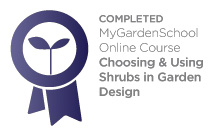PLANTS THAT CURE - Review
Of the approximately 300,000 plants that have evolved on Earth, at least one tenth of them have been used in traditional herbal medicine or as local remedies. In this new book from Kew Publishing, ‘Plants that Cure‘ by Elizabeth A. Dauncey and Melanie-Jayne Howes, the authors explore the natural history of the world’s most important medicinal plants.
More recently, the application of science has proven the effectiveness of many plants, enabling us to develop important medicines, often in the form of single isolated plant compounds. Exploring these compounds and the plants that produce them is the foundation for this book.
It’s a fascinating read, clearly presented and informative with chapters divided by themes including the heart, nerves, easing of movement, coughs and sneezes and the botanical medicine chest. The Introduction explains how our use of plants as medicines has developed from ancient times into a number of traditional systems and then into modern medicine.
By organising the book by body, system and type of condition – illustrated with examples of compounds used to treat them and the plants where they are found – the book is easy to follow and quick to reference. Types of cancer, eye conditions, arthritis and joints, nausea and indigestion, are just some of the areas covered, with the role of plants explored in different systems of traditional medicine.
Beautifully illustrated with clear diagrams, the book provides an informed background on many of the plants that have a long history of use, so their mechanism of action can be explained, as well as their role within the plants themselves. The stories behind the plants are in themselves interesting and the authors, through text, photographs, illustrations and chemical structures help us to explore the constituents of the plants that humans have found useful as medicines.
Traditional systems of medicine from different geographical regions in the world are covered and the latest research has been used throughout the book and presented in a readily accessible way.
This book is not a medical manual and it is important to note that it is not intended as a guide to self-diagnosis and self-treatment, but what it will do is inform the reader as to the breadth and variety of plants we use in modern medicines. The initial chapters deal with the beginnings of medicinal treatments, plant laboratories and emerging technologies including new areas of discovery, plant families and regulation.
This is a book you can easily dip into to learn more about a particular area you might be interested in and provides an authoritative natural history of many of our most important medicinal plants.
Botanists and anyone interested in natural remedies will find this book a useful and informative read and it is sure to be a popular addition to the Kew Publishing stable of publications.
Elizabeth Dauncey is a botanist with a PhD in Plant Taxonomy who has spent most of her career working for the Poisons Unit at Guy’s & St Thomas’ Hospital NHS Trust in London, on joint initiatives with the Royal Botanic Gardens, Kew. She is a published author of several books including ‘Poisonous Plants: A guide for Parents and Childcare Providers (Kew Publishing 2010).
Melanie-Jayne Howes is a registered pharmacist and Chartered Chemist, with a PhD in pharmacognosy prior to her appointment as a phytochemist at the Royal Botanic Gardens, Kew. Her research has focused on investigating the scientific basis for the uses of plant, particularly those used as medicines and for human health.
The Royal Botanic Gardens, Kew, is a world-famous scientific organisation and internationally respected for its outstanding collections as well as its scientific expertise in plant diversity, conservation and sustainable development in the UK and around the world.
‘Plants that Cure‘ by Elizabeth A Dauncey and Melanie-Jayne Howes, is published by Kew Publishing in hardback priced at £25.00.
A review copy of this book was provided by the publisher.

